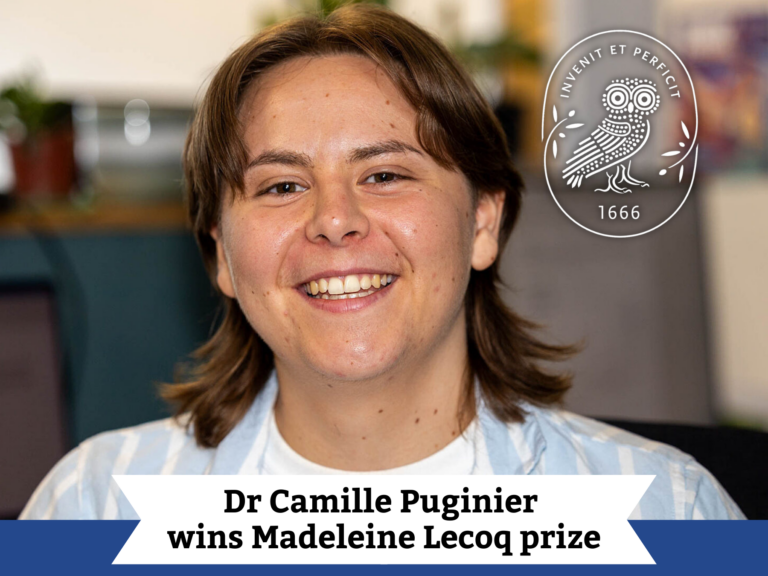Hope to save citrus and olives from devastating diseases
Transferring immune receptor genes from the model plant Arabidopsis to sweet orange makes them more resistant to damaging bacterial diseases such as Xylella.
Xylella fastidiosa has quickly garnered a reputation as one of the most dangerous plant bacteria worldwide. Having contaminated one million trees in the EU’s olive groves, where it causes ‘olive quick decline syndrome’, this incurable disease could result in losses of an estimated €34 million over the next 50 years. Xylella is transferred between plants by sap-sucking insects, such as spittlebugs and leafhoppers, just like mosquitoes transfer diseases between humans. This bacterial pathogen not only affects olive trees, but also many other economically important fruit trees such as almond, grape, and citrus as well as maple, cherry and oak that are common in the UK.
Citrus production is threatened by two destructive diseases, citrus canker and citrus variegated chlorosis. The former is caused by a subspecies of Xylella, X. fastidiosa subsp. pauca, and the latter by the bacteria Xanthomonas citri subsp. citri. There are currently no breeding or chemical solutions available for either disease. However, by applying fundamental knowledge from model plant species, we have the potential to engineer disease resistance in fruit trees. This was the basis of a study recently published in the journal, Plant Biotechnology.
By transferring genes from the model plant Arabidopsis thaliana to the Valencia sweet orange Citrus sinensis, scientists were able to confer broad-spectrum bacterial resistance against citrus canker and citrus variegated chlorosis. They used a well-known immune receptor from Arabidopsis, ELONGATION FACTOR-TU RECEPTOR (EFR), which recognizes a molecule conserved in bacteria and activates immunity. The authors first confirmed that EFR within Arabidopsis could perceive Xylella bacteria. They then tested whether transferring EFR to sweet orange conferred disease resistance to citrus canker and citrus variegated chlorosis.
By comparing canker lesions between wild-type and transgenic lines of sweet orange expressing EFR, it was notable that the transgenic lines had less severe lesions. This confirms that by expressing EFR in sweet orange it is possible to improve the resistance of these plants to Xylella and Xanthomonas. The results of this study, along with a similar study done in apples, are the first to show that EFR transferred into perennial crops can increase resistance to Xylella.
The successful transfer of EFR into sweet orange exemplifies that the transfer of such plant immune receptors offers an important biotechnological strategy for engineering resistance against Xylella in all fruit trees.
Alessandra Alves de Souza, the project lead based at Institute Agronomic (IAC)/Citrus Research Center, said “This work reinforces the importance of basic knowledge to achieve innovative and sustainable solutions to guarantee agricultural production in the future. This is particularly important since the number of pests and diseases has increased over the years and has become a threat to food production. Thus, the results of this work show that science and integration between researchers with different skills can help to solve challenging problems such as the control of pathogens in a more sustainable way and the maintenance of agricultural productivity”
Cyril Zipfel, group leader at The Sainsbury Laboratory and one of the authors of this study, said “These represent exciting results that build on our previous studies on the transfer of EFR to confer resistance against bacterial diseases in a variety of crops. The fact that this could also be applied to perennial crops, such as sweet orange or apple, which suffer from devastating bacterial diseases, brings optimism to save these important economical and cultural crops – pending a regulatory easing for such biotechnological solutions pandemics affecting plant health.”
Silke Robatzek, a co-author based at the Ludwig Maximilian University of Munich, said “Exploring Arabidopsis as a genetic model host for Xylella fastidiosa is key to obtaining a fundamental understanding of the diseases caused by this bacterial pathogen. I am very excited that we have identified a first immune receptor, EFR, that can control Xylella infection. We are now aiming to transfer EFR into olives, hoping to provide a genetic solution to the olive quick decline syndrome.”
This project is a collaboration between the Institute Agronomic (IAC)/Citrus Research Center, Ludwig Maximilian University of Munich and The Sainsbury Laboratory. The research was funded by Fundação de Amparo à Pesquisa do Estado de São Paulo (FAPESP - 2013/10957-0), the Gatsby Charitable Foundation, the 2Blades Foundation and a Heisenberg fellowship (RO 3550/14-1) with an accompanying grant (RO 3550/13-1) from Deutsche Forschungsgemeinschaft.
The article “The Arabidopsis immune receptor EFR increases resistance to the bacterial pathogens Xanthomonas and Xylella in transgenic sweet orange” can be found here
Citation
Mitre, L.K., Teixeira-Silva, N.S., Rybak, K., Magalhães, D.M., de Souza-Neto, R.R., Robatzek, S., Zipfel, C. and de Souza, A.A. (2021), The Arabidopsis immune receptor EFR increases resistance to the bacterial pathogens Xanthomonas and Xylella in transgenic sweet orange. Plant Biotechnology Journal. Accepted Author Manuscript. https://doi.org/10.1111/pbi.13629
About The Sainsbury Laboratory
The Sainsbury Laboratory is a world-leading independent research institute that specialises in plant-microbe interactions, funded by The Gatsby Charitable Foundation, The University of East Anglia and UKRI-BBSRC. Our work is focused on leading global efforts to reduce crop losses to disease.
For more information please contact Mia Cerfonteyn at comms@tsl.ac.uk.


